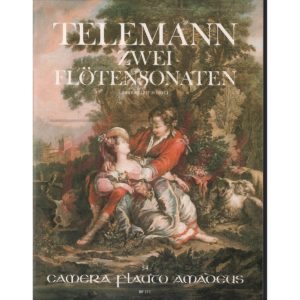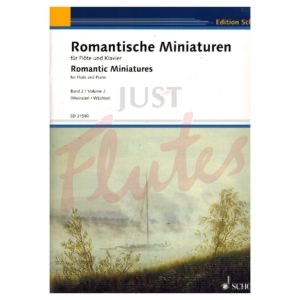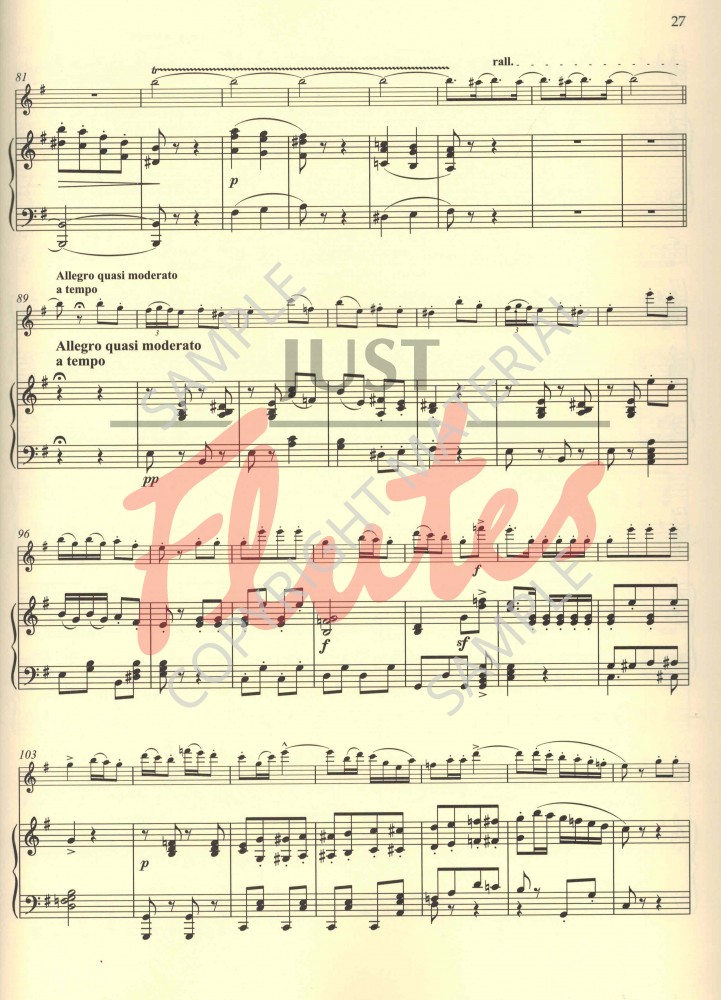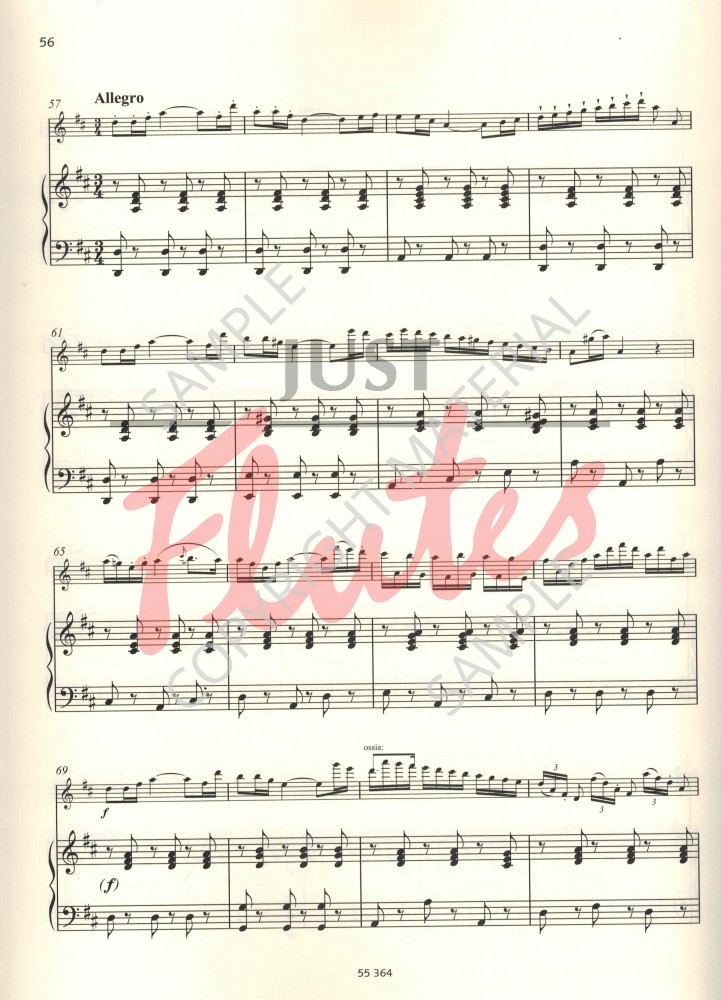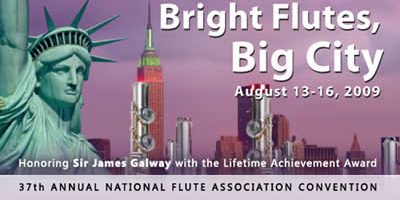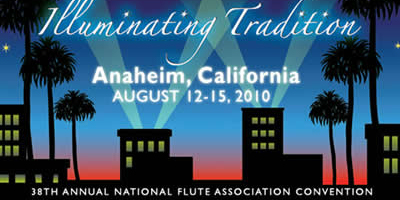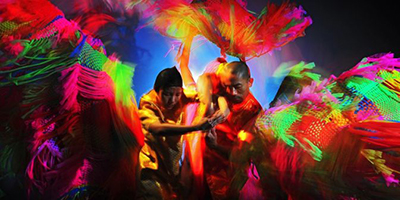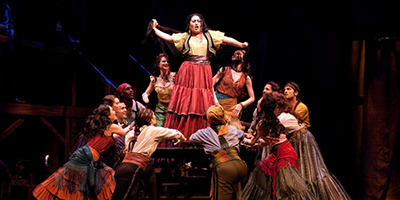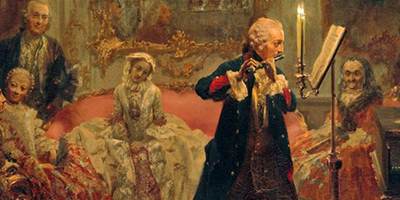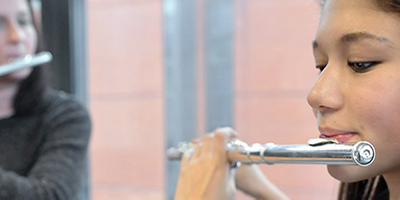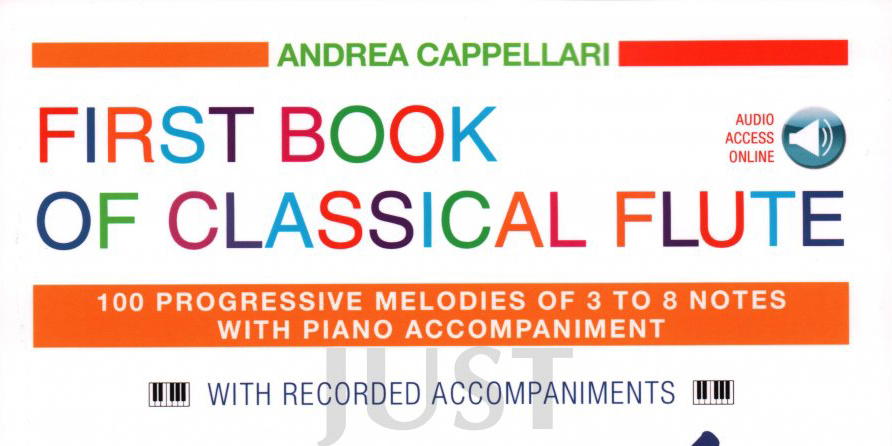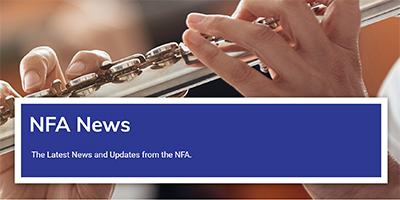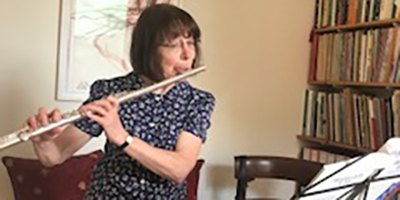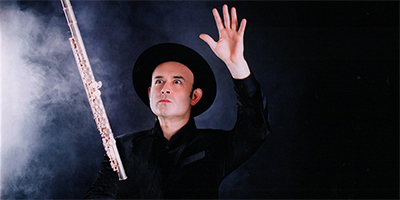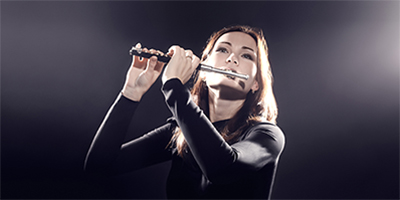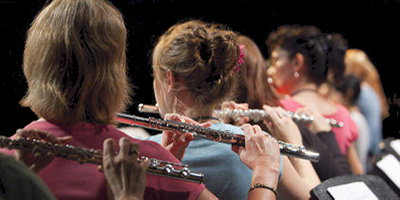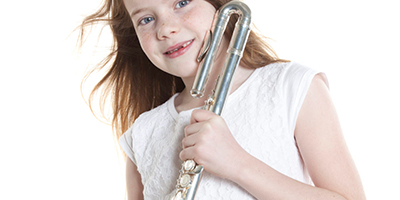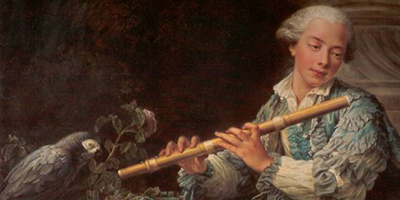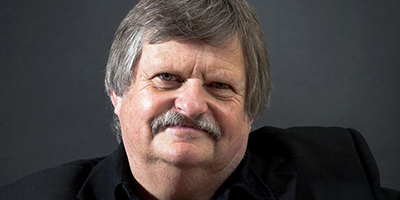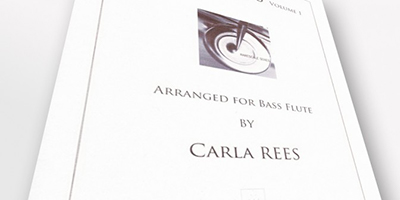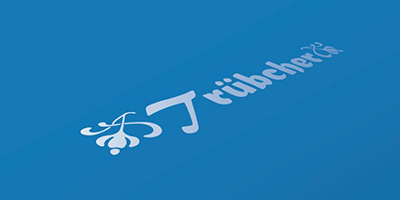Writing
Sometimes it just has to go into print!
Chris is currently the consultant Catalogue Editor for Just Flutes, where her assessments of flute publications are read worldwide.
Reflections on the NFA 2009
It's many years since I last visited the NFA Convention and this year it was being held in New York. Credit crunch? What credit crunch? I couldn't resist the pull of my favourite city and I managed to persuade my long-suffering husband to come with me as long as we had a holiday afterwards. So Thursday August 13th found us jetting off to the Big Apple for 3 days of wall-to-wall flutes. The Annual Convention of the National Flute Association is now in it's 37th year and this one was appropriately subtitled 'Bright Flutes, Big City'. I was very interested to see how much had changed during my absence.
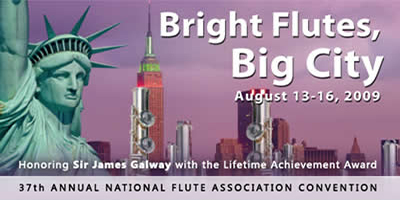
The first thing was that it felt very expensive. In order to register ($230) you have to join the NFA ($60 for emembership meaning that you print out the Flutist Quarterly!) and it was another $75.00 for Gordon's 'Non Flutist' badge – in all $365 or about £225.00. So what do you get for your money? Well, not surprisingly, the flute, the whole flute and nothing but the flute. You are given a 325-page handbook, which, you very quickly discover, is an utterly indispensable guide to the astonishing amount of events on offer. There are concerts of all kinds, lectures, masterclasses, workshops and showcases. Big names, little names, composers, jazzers, pedagogues, publishers – the list of participants seemed endless. The big dilemmas were all about how to go to as much as possible without suffering a breakdown of some kind halfway through the second day.
One of the odd things about the NFA is that they always hold their Conventions in a swanky hotel, in this case the Marriott Marquis, fantastically situated on Broadway just by Times Square. This has obvious benefits, not the least of which is that everyone can stay on site and there are no travel problems. The hotel allows up to 4 to share a room (not a problem in the US where the rooms are vast), so costs needn't be exorbitant. The big disadvantage is that the acoustics in the performing areas are less than ideal with low ceilings, plush carpets and lots of soft furnishings to soak up the sound. All the performers are therefore up against it no matter who they are. Another problem is that some of the spaces are just too small – I tried to hear Alexa Still one morning and the queue was out the door and down the stairs!
Rebecca Collaros, a close friend, is on the NFA committee and was a volunteer usher. (She also happens to be the teacher of President Obama's daughter.) Rebecca had the misfortune to be the main usher at Denis Bouriakov's recital, which was held in a side room far too small to accommodate the many who wished to attend. As large numbers tried to crowd in, the hotel staff deemed the room overcrowded and locked the doors. There was a near riot outside as angry punters demanded entry. Rebecca has seen it all before of course, as this is not uncommon. We were safely inside however, and were treated to an hour of the most wonderful flute playing – even if he did play entirely violin music! We took her for a drink afterwards to compensate and described his playing as best we could.
Another fact about the Convention is that it's huge. 4000 attended this one at some point over the 4 days and the attempt on the world record for the Largest Flute Ensemble (conducted by our own Sir James Galway) was successful. And what do 4000 flute players do? They perform in flute choirs of course! This was first thing we came across as we arrived and it soon became clear that they were everywhere – in the foyer, up the stairs, in the bar as well as in the concert hall. This is a big part of the American flute scene and enables players to get involved at all levels. Flute clubs are integral to the success of the NFA and as this convention was in New York and therefore even larger than usual, they encouraged as many as was physically possible to perform. Bravo!
4000 flute players are also encouraged to part with their hard-earned dollars in the vast exhibition hall. As you would imagine, there were a lot of instruments here – I reckon the Flute Centre of New York was showing upwards of 500 flutes alone. On the other hand Miguel Arista had a single flute, a few headjoints and plenty of orders. The Arista family is always interesting. The 3 flute-making brothers see eye-to-eye about almost nothing, so they have three different stands in 3 different parts of the hall - confusing if you can't remember which brother is which. The exhibition itself is a little daunting, not to mention noisy, but I did manage to join the Marcel Moyse Society (free), buy a book ($15.00) and a natty gadget which has a screwdriver at one end and a springhook at the other. This cost $10 and came with a guarantee – a veritable bargain! I also bought a piccolo…….
Not everything at the Convention is all razzamatazz. The Louis Moyse Memorial concert was a touching event, well presented. We were supporting Rebecca who had spent some time studying with him and had been asked to play. During the solos and ensembles that made up the tribute there was a slideshow featuring these performers as they had worked with Moyse at his home. Some of them were understandably moved by the occasion. Janet, Moyse's wife, was there to narrate one of the pieces and to also read a tribute. This proved too much for her and she inevitably broke down, as did another performer, Shelley Binder, as she tried to continue. Eventually John Barcellona, the concert organiser and long-time friend of Moyse, finished the script – by which time even I was struggling. It was all very American.
The nature of the concerts during the Convention is interesting. The big names have one to themselves of course, but others are often grouped under a theme of some kind. This might be "Ellis Island: Music from Around the Globe" which took place at 8.30am on Saturday and featured music by Elizabeth Varcoe, Heinz Benker, Chan Ka Nin and Bartok, or "Born in the USA: NFA Commissions that Live On" - 9 of them - which took place at the more civilised hour of 1.30pm. We made sure to support the Brits in whatever capacity they were performing. "Ian Clarke in Concert" was wonderful, as was Wibb's CPE Bach Concerto in the Friday night Gala concert. Paul Edmund-Davies was very impressive, flying the flag for British excellence and wit: "For this concert I was asked to make the musical journey from Italy to England – but not via France!" he quipped to everyone's amusement. 2 newcomers were also impressive. Carla Rees was wonderfully composed during her lovely performance of 2 pieces by Michael Oliva as part of the "New York Electrified" concert. Andy Findon performed his own Michael Nyman transcription 'Yamamoto Perpetuo' as part of "The Melting Pot: Works from Slovenia, Russia, France, US, England and Germany". This contained a real hotch-potch of contemporary pieces and lasted nearly 3 hours! There was some great stuff here though, including the beautifully sensitive music of player/composer Wolfgang Wendel. Andy did us proud and treated the small but appreciative audience to an astonishing display of virtuosity.
There was so much that got away – so many flutes and not enough time. I missed the "Gothic Gathering: Chamber Music for Mixed Ensembles", "Kings of the Hill, Top of the Heap: Piccolos in Concert" the Telemannathon (all 34 flute duets in succession) and the Baroque Flute Artist Competition Finals. I didn't hear Alexa Still (again), Steve Gorn and his bansuri flute, or the Venezuelan National Flute Orchestra. I even missed our illustrious editor - sorry Robert but we landed too late! And anyway there were friends to see. Haffi from Iceland showed me her new book. I hadn't seen her for ages and wasn't expecting to run into her either, so that was a real treat. There was also much propping up of the bar to do as well, as this was the best place to meet new players. It was also relatively quiet!
So had much changed? Well it was definitely bigger than I remembered and noisier. The standard of playing was exceptionally high but that's the same here and is to be expected everywhere. The variety of events was truly staggering. The format was pretty much the same though, and I was surprised at just how many people I recognised after such a protracted absence. Flute Conventions are always marvellous gatherings of all kinds of people united with a passion for the flute and this one was no exception. I had a great time on my last visit all those years ago but it was even better here. And there was still New York to see. After all, I was supposed to be on holiday!
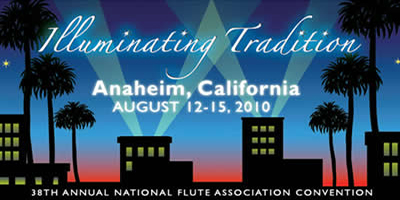
"The Feminine Flute" -NFA Convention Anaheim 2010

"The Feminine Flute" - Lecture Recital by Christine Hankin
Welcome to this celebration of the feminine side of the flute! My European perspective is by no means comprehensive and is completely personal but it will illustrate the artistry that these women composers have brought to flute music – often against all the odds and in the face of the most incredible prejudice.
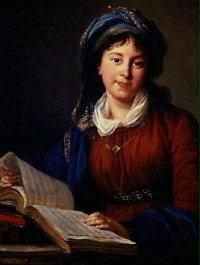
Chris Hankin plays New Anna Bon - Sonata da Camera
There was in fact quite a lot of music written by women in the Classical and Romantic periods – it's just that not much of it survives. A woman's place was in the home and we were not encouraged to engage in any kind of activities that could be considered unusual. A lack of a proper musical education was another stumbling block. If they were lucky, girls were born into either a musical family or the aristocracy where they were able to grow up with music around them. If not the chances of succeeding at all were very slim. Even if you came from a privileged background, it wasn't enough. Not even a big name could protect you. Mr. Mendelssohn wrote this wonderful put-down to his daughter Fanny:
"Perhaps for Felix music will become a profession, while for you it will always remain but an ornament; never can and should it become the foundation of your existence."
Clara Schumann - virtuoso pianist, composer, teacher and mother of seven - wrote in her diary in 1839:
"I once thought I possessed creative talent, but I have given up this idea; a woman must not desire to compose - there has never yet been one able to, and why should I expect to be the one?"
It was also the case that the flute wasn't even taken seriously as a solo instrument by the men so it's no wonder that repertoire by women from this period is virtually non existent!
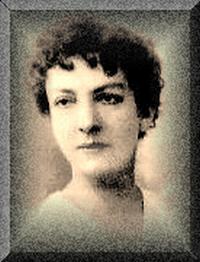
As flute players we mainly know her for the famous Concertino, but she was nearly 45 when she wrote this piece. Her real claim to fame is that she became incredibly successful as a writer of small lyric piano pieces. Chaminade knew her audience and she spoke directly to women. Most of her pieces were simple and in the Salon style, and were primarily aimed at women who could play them at home without too much practice. She was hugely popular in the USA where Chaminade Societies sprang up to promote her latest pieces.
Chris Hankin plays Cecile Chaminade - Serenade aux Etoiles
The Serenade aux Etoiles was written after the Concertino and is dedicated to Hennebains, Taffanel's successor at the Paris Conservatoire. It is completely typical of her salon style – what she lacked in depth she made up for in elegance and beautiful melody. It is chanson on the outside and starry and sparkly in the middle. What more could you want in a flute piece?

I'm not sure that she had a great affinity for the flute. Concertinos exist for the clarinet and bassoon and there are various wind chamber works from which the flute is notably absent. She didn't get around to writing Colloquy, her only flute and piano piece, until 1979 and then only as a result of a commission by the New Zealand born flute player Ingrid Culliford. Stylistically, Maconchy was influenced by Bartok and Janacek, and she constantly pushed the boundaries of tonality in all her music. Colloquy is a therefore a challenging piece but well worth the effort!
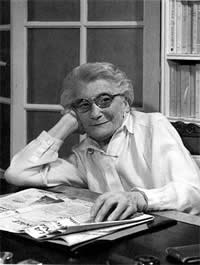
She was keen on the neo-classicism of the time and was influenced by Stravinsky amongst others. She also had a natural feel for melody. In 1935 she took a job at French Radio where she remained for over 15 years. This sets her apart from the other composers featured today – her composing was underpinned by a regular salary! It enabled her to write prolifically - her music includes 10 operas, several stage works, film scores, numerous wind chamber pieces as well as music for radio. She even has a French government composition prize in her name – not bad for a woman!
Whilst she was at French Radio she was assigned to the music concrete project and she experimented with electronic sound effects most of the time. So it's quite interesting that she wrote this lovely Sonatina for Jean-Pierre Rampal when she was right in the middle of it. Also, it's dated 1943 when Paris was occupied by the German forces. You would never know it - it sounds as if it could have easily have been commissioned by Taffanel!

She was born in London into a musical family. Although she isn't a flute player her father, Harold Clarke, was. He was principal flute at the Royal Opera House Covent Garden and Professor at Trinity College, and so from an early age she was surrounded by music. She started to compose as a child but only went back to university to formally study composition when her children were older.
She has been very successful – not at any time in the last 12 years has she been without a commission – and she has inevitably written a great deal of flute music. Her styles here range from 6 Pastiches, which are wonderful educational pieces, to the very challenging and difficult Moon Dances.
She has resisted all attempts to persuade her to join any organisation that promotes women composers feeling that this is completely irrelevant in today's world.
Eleven was written in 2001:
"I visited Hungary in the mid nineties and gathered much middle European folksong material as Bartok had done. I found one particularly heart rending song called the Three Orphans which I have alluded to in this work. Eleven was written at the time of the troubles in Kosovo and I became obsessed with what happens to a culture when it is dispersed due to war. Eleven means alive in Hungarian and I dedicated it to 'all those in danger of losing their cultural identity, in the hope that they can keep their voice 'alive'."

I asked her if she found there was any prejudice against her as a female composer expecting her to say that there wasn't any. This is after all cosmopolitan London in 2010!
"I've encountered some prejudice against female composers.There sometimes seems to be an assumption that 'typical' female composers write romantic, programmatic music, as opposed to intelligent, abstract music. This is an ignorant viewpoint because not only can programmatic music be intelligent and well structured, but also male and female composers are equally versatile. It seems excusable that male composers can write in any style, whereas it is considered 'female' to write a certain way. I have never heard someone say of a male composer "He writes like a girl!"
The piece she wrote for us today is called Dystopia, which actually means the opposite of Utopia.
"The inspiration for the piece comes from the idea of a society, which juxtaposes the beautiful with the grotesque. It explores tension between fluid, improvised-sounding passages and a clear, lyrical melody line. The beauty is hidden in the depths and eventually comes to light, but is oppressed by the overpowering darkness."
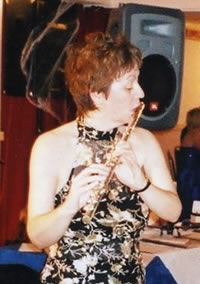
She writes easy listening music. She has an undoubted talent for melody and all her flute music has gorgeous tunes. I asked her to write Levitation at a time when she was quite ill and it represented a huge challenge for her:
"I do feel that Levitation is very much about me and my fight to get well, but I have still maintained my Foxy Jazz/French style throughout the piece. I think perhaps that there are moments of Gaubert, as the various sections frequently change key and link together quite subtly. Also I'm hearing fragments of Poulenc but most of all I always compose from the heart and want to move people with strong melodies, romantic and sometimes Jazz/Funky rhythms and harmonies. I want the player and the listener to Levitate!"
List of composers and the works performed
Anna Bon de Venezia 1740 - ?
Allegro from Sonate da Camera Op 1 No 2 in C major.
6 Sonatas da Camera Op 1 Vol 1 published by Furore Edition - FE 4690
Elizabeth Maconchy 1907 – 1994
Colloquy for flute and piano published by Chester Music - CH 55229
Cecile Chaminade 1857 - 1944
Serenade aux Etoiles Op 142 published by Enoch - E&C. 7352
Claude Arrieu 1903 – 1990
Sonatina for flute and piano published by Amphion - A126
Cecilia McDowall 1951 –
Eleven for flute and piano published by Hunt Edition - HE57
Other recommended music:
6 Pastiches published by Pan Educational Music
Moon Dances published by Hunt Edition
www.ceciliamcdowall.co.uk
Solfa Carlile 1985 –
Dystopia – as yet unpublished.
www.solfacarlile.co.uk
Amanda Jane Fox
Levitation for flute and piano to be published Autumn 2010 by Foxy Sounds
Other recommended music:
Infinity published by Foxy Sounds
In the Clouds published by Foxy Sounds
www.foxysounds.co.uk
The Feminine Flute – Music for Flute and Piano - CD
Christine Hankin and Timothy Murray
Available from:
Carolyn Nussbaum Music Co www.flute4u.com
Just Flutes www.justflutes.com
EXPLORING THE NEW ABRSM 2018 FLUTE SYLLABUS: GRADE 7

Grade 7:
Blog snapshot – my recommendations at a glance!
- Giuseppe Rabboni: Sonata No 4 in D major from Sonatas for Flute and Piano
- Telemann: Sonata in G major
- Frederick the Great: Allegro from Sonata in B flat Spitta No 76.
- Serini: Andantino grazioso and Allegro assai from Sonata No 1 in D major
- Gluck arr Boehm: Che faro senza Euridice from Romantic Miniatures Volume 2
- Edward German: Intermezzo
- Moszkowski: Spanish Dance from 300 Years of Flute Music.
- Paul Wachs: La Flute de Pan from Romantic Miniatures Volume 1
- Telemann: 12 Fantasias
- CPE Bach: Solo Sonata in A minor
- Harris and Adams: More Graded Studies Book
- Bizet arranged Hunt: A Bizet Notebook
- Alicia Hart: Scats from Scatadoodle
Whisper it quietly but this might be time to invest in whole pieces or compilation books, rather than buy the ABRSM book itself!
List A:
This is another strong list with a more diverse range of periods than often.
The Rabboni Sonata in D major is particularly tuneful and highly recommended, especially for those less likely to be at home in the Baroque period.
For those who are, the Telemann Sonata in G major is a strong choice.Gluck's Che faro senza Euridice arranged by Boehm is an absolutely wonderful piece published in the ABRSM book but it's also available in Romantic Miniatures Volume 2 which you could then use for grade 8!
Less familiar are:
Frederick the Great: Allegro from Sonata in B flat Spitta No 76.
If you splashed out on the complete volume of these sonatas for grade 5 this one is a great option here. It's also available separately and is well worth the money as the whole sonata is delightful.
The movement set is a lovely and sprightly fast movement which could be tricky for the fingers. If you can sort out the tonguing to suit yourself you will be rewarded with a happy piece that will bring joy to everyone!
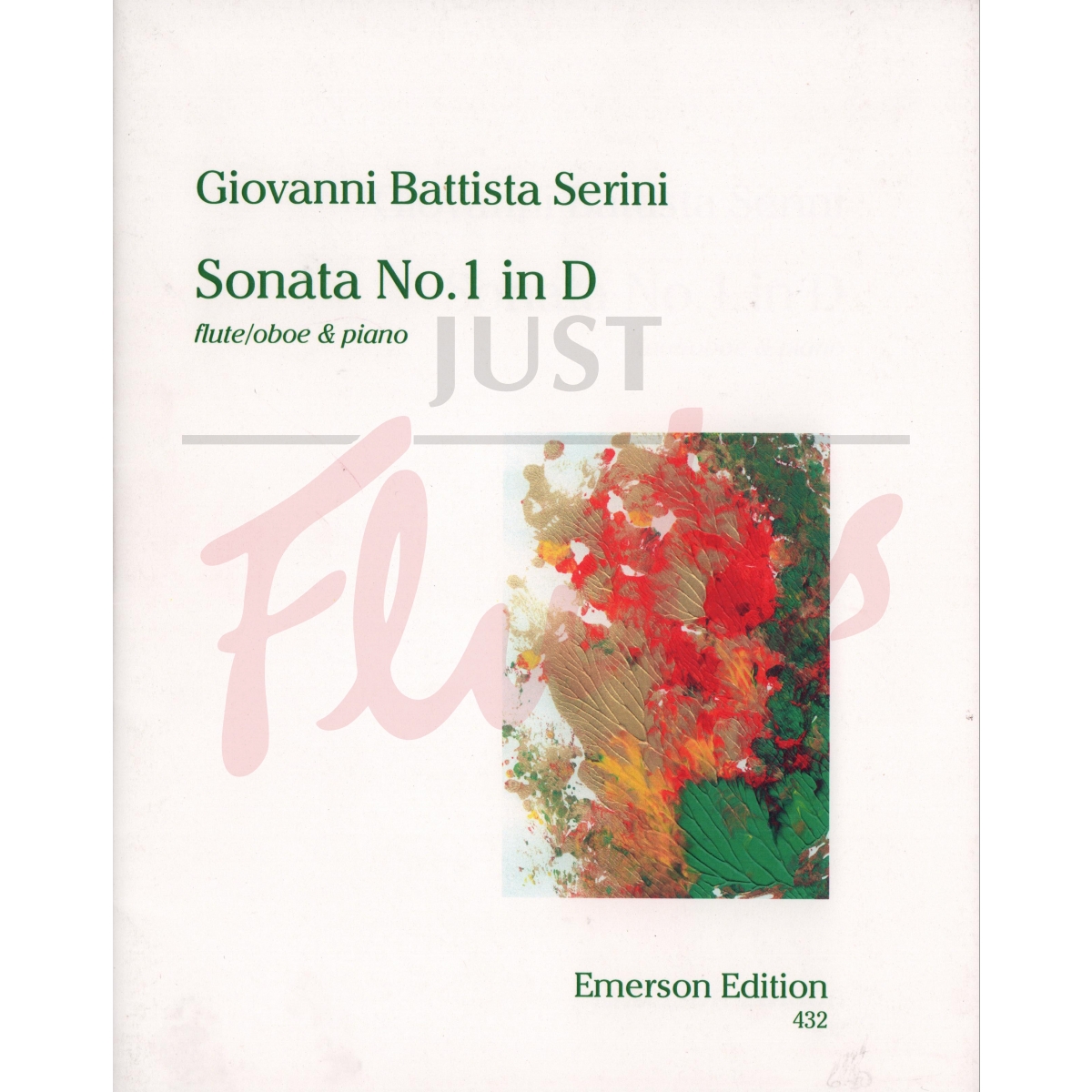 Serini: Andantino grazioso and Allegro assai from Sonata No 1 in D major
Serini: Andantino grazioso and Allegro assai from Sonata No 1 in D major
The beautiful slow movement which is quite Romantic in character is followed by a very lively Allegro assai. This is fiddly rather than difficult with the editorial trills making the writing very intricate. It's a challenge, as it should be at this level, but refreshingly different.
List B:
Again, the supporting pieces are strong. You may not need to look any further than the Poulenc, Faure, Berkeley or Tea for Two but there are other really interesting options available to explore too!
This is a lovely Intermezzo with a rather rambling rhapsodic format that is charming. It will need work to cement the ensemble as a result, especially as there are several changes of speed. Definitely worth a look though, especially if you liked the Saltarello from the last syllabus.
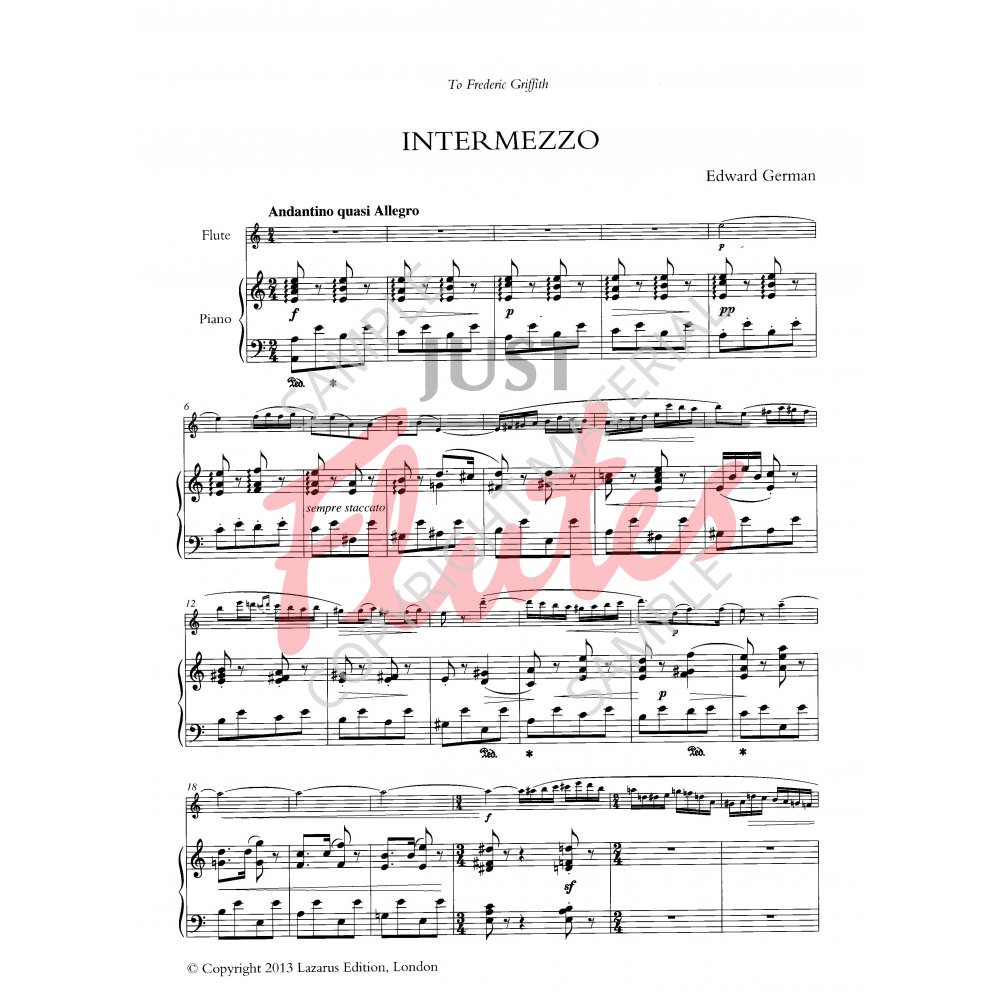
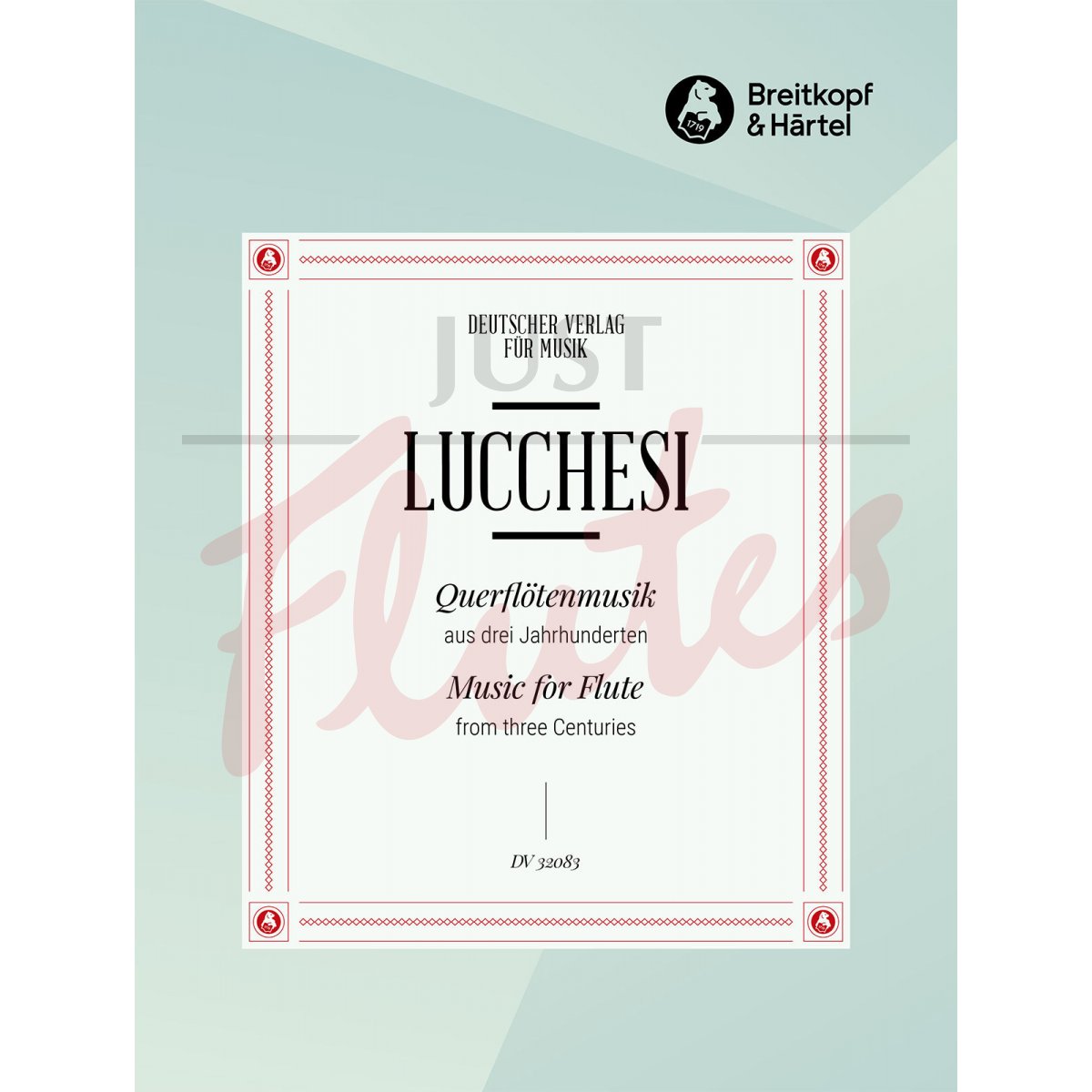 Moszkowski: Spanish Dance from 300 Years of Flute Music.
Moszkowski: Spanish Dance from 300 Years of Flute Music.
This will be valuable if you are looking for slightly less daunting. The Spanish style is one that everyone knows and there is plenty of character in the writing to help with interpretation. Blessed with a straightforward structure, this is definitely not as technically demanding as some of the other pieces. You may also have this book already so it makes sense to play something completely different from it!
 Paul Wachs: La Flute de Pan from Romantic Miniatures Volume 1
Paul Wachs: La Flute de Pan from Romantic Miniatures Volume 1
This is another great French flute piece that has a lot in common with the Mel Bonis that is published in the ABRSM book. It's a little more straightforward in harmonic style though. It has a charming rhythmic simplicity, and if you have a student with a supple tone, good breathing and decent intonation, this is perfect!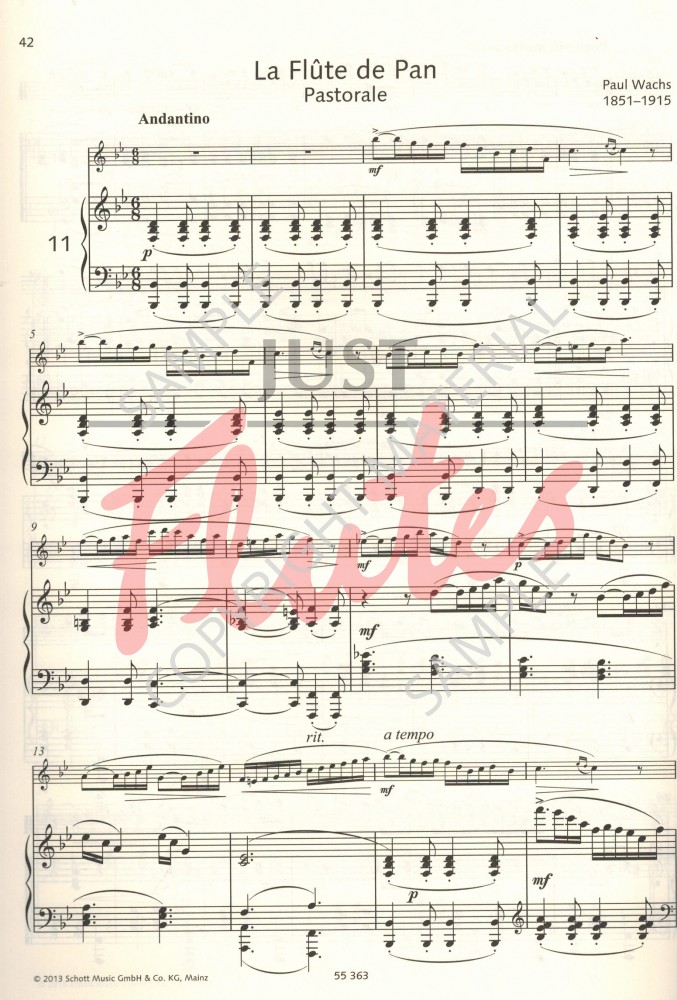
List C:
There are some most interesting studies set for this grade which includes both core repertoire and the opportunity to leave your comfort zone! You might have already introduced your student to the Telemann Fantasias, or the CPE Bach Unaccompanied Sonata so you're instantly ahead of the game! However, be sure not to miss the expressive Prill Study in D minor from More Graded Studies Book 2 which is a tone colour challenge, and there is the Toreador's Song from The Bizet Notebook if you need something very well-known.As ever though, there is always room for something different!
Alicia Hart: Scats from Scatadoodle
This book features at grades 4 and 5 (good value again!) and introduces the concept of the scat-singing technique used by jazz players. It's a great choice if your accompanied pieces are more traditional.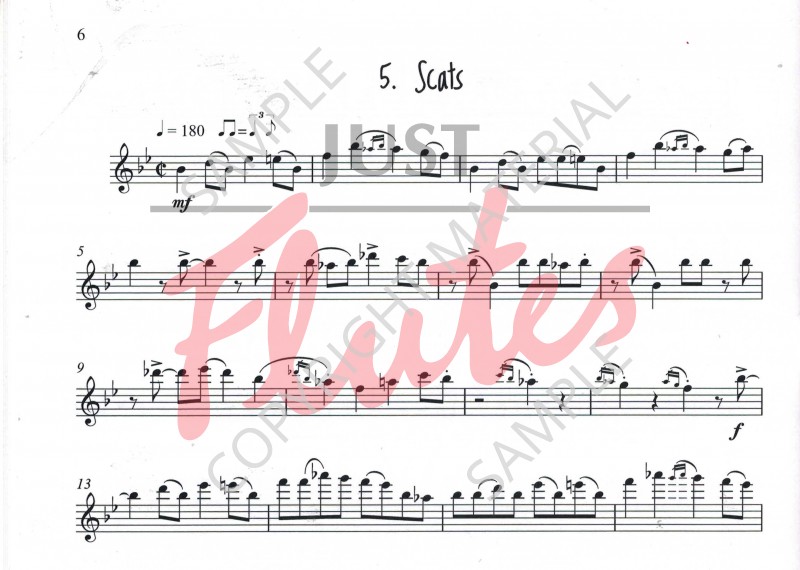 This piece has a natural swing rhythm which should be quite easy to learn as the patterns are quite repetitive. It's technically fairly demanding with some big leaps around the flute but it's is very well written with plenty of places to breathe. Playing this from memory would be relatively easy for any player used to doing this and would be very impressive in the exam!
This piece has a natural swing rhythm which should be quite easy to learn as the patterns are quite repetitive. It's technically fairly demanding with some big leaps around the flute but it's is very well written with plenty of places to breathe. Playing this from memory would be relatively easy for any player used to doing this and would be very impressive in the exam!
There is just so much quality in the music set for this grade that you could quite easily never repeat the same set of pieces – even over 3 years!
EXPLORING THE NEW ABRSM 2018 FLUTE SYLLABUS: GRADE 8
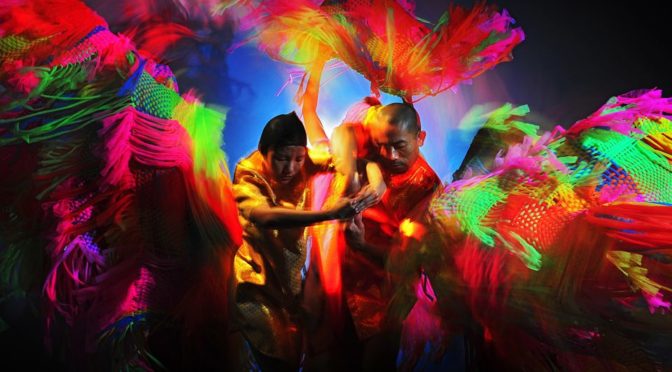
Grade 8: The Penultimate Grade
Blog snapshot – my recommendations at a glance!
- Muller: Concerto in E minor Op 19
- John Ranish: Sonata in A minor
- Nineteenth Century Italian Music for Flute and Piano
- Romantic Miniatures Book 2
- Albeniz arr Hedges: Sevilla
- Paul Lewis: Serenade Populaire
- Edward Gregson: Aztec Dances
- Christopher Ball: Invocations of Pan
- Rob Buckland: Changing Times
- Hilary Taggart: Pictures
- Robert Winn: Articulation for Flute
With the introduction of the ARSM diploma, grade 8 isn't quite the pinnacle it once was, and the repertoire used here looks as if it has been set with half an eye on this new exam Old favourites remain and old favourites return, and I will leave you to ponder the riches of the core flute repertoire at leisure. However, here are some great new pieces that might come in handy over the next 3 years.
List A:
A.E. Muller: 3rd movement from Concerto in E minor Op. 19
This is wonderful alternative to Mozart! The whole concerto is a joy and this lovely movement takes the form of a sprightly theme and seven variations. The style is as elegant as Mozart but the technical demands less so, especially as the tricky 4th variation should be omitted. Starting in E minor, the speed increases through each variation until the slow fifth emerges in E major. The composer then returns the music to E minor for the difficult sixth variation before rounding off the whole work with an elegant 6/8. Thinking about ARSM, this is great preparation for the Chopin Variations on a Theme of Rossini which is so popular at diploma level.
John Ranish: 1st and 2nd movements from Sonata in B minor
You could consider this a less challenging option. A lovely Adagio opens the work and has already been sensitively edited to avoid complex rhythms or fussy ornamentation.
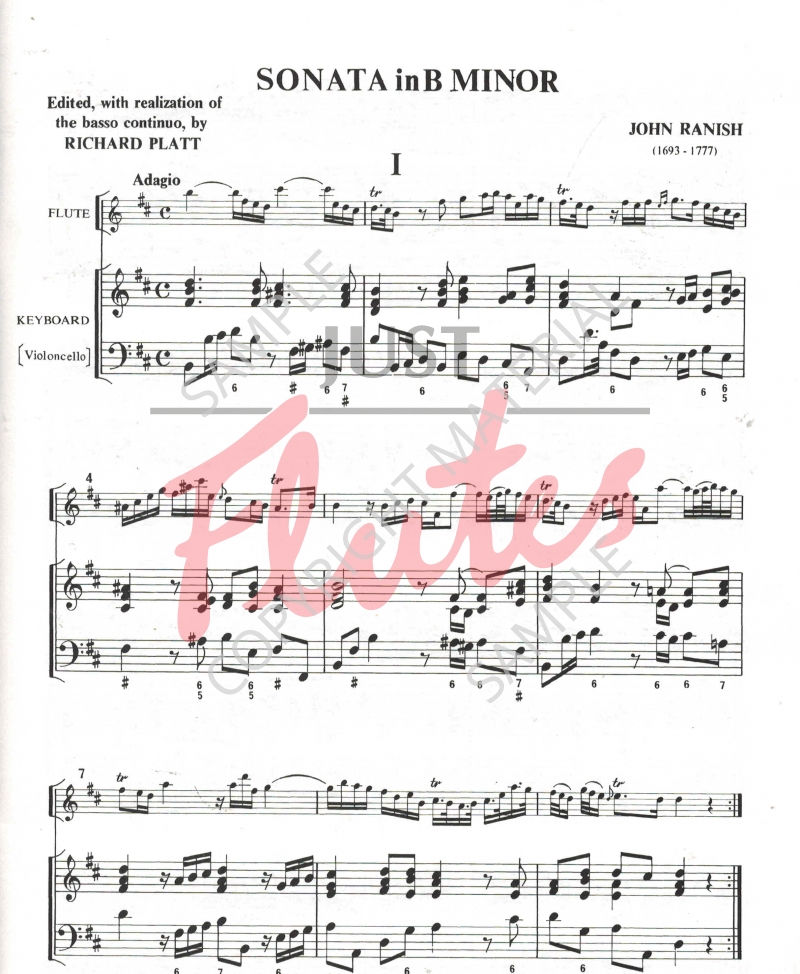
The Allegro has a small note range so there are no really big leaps to negotiate. It's also lovely!
Now for 2 pieces at the top end of the range:
Galli:Divertimento Una Follia a Roma di F. Ricci from 19th Century Italian Music for Flute and Piano
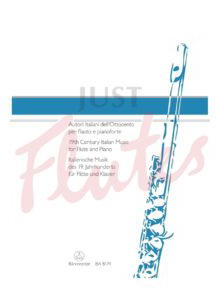
A great introduction to the fantasy format that is so prevalent in our repertoire, this is a virtuoso piece that will easily make the transition to ARSM. Every part of flute technique is needed here, together with an advanced level of musicality which will help carry the form. You also have to be supremely confident!
Rossini: Andante and Polonaise from Romantic Miniatures Book 2
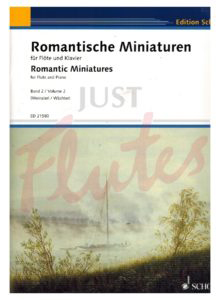
This is another show-off piece, although easier to learn than the Galli and much shorter. The opening dramatic theme should be paced imaginatively but establishing the Polonaise dance rhythms should be more straightforward. It would be great to be able to triple tongue too but even at a slightly statelier speed this is a very good choice for a good player.
List B:
Albeniz arranged Hedges: Sevilla
In a list full of notes, this has less than some. Knowing this familiar tune will help with the both the rhythms and the six changes of key.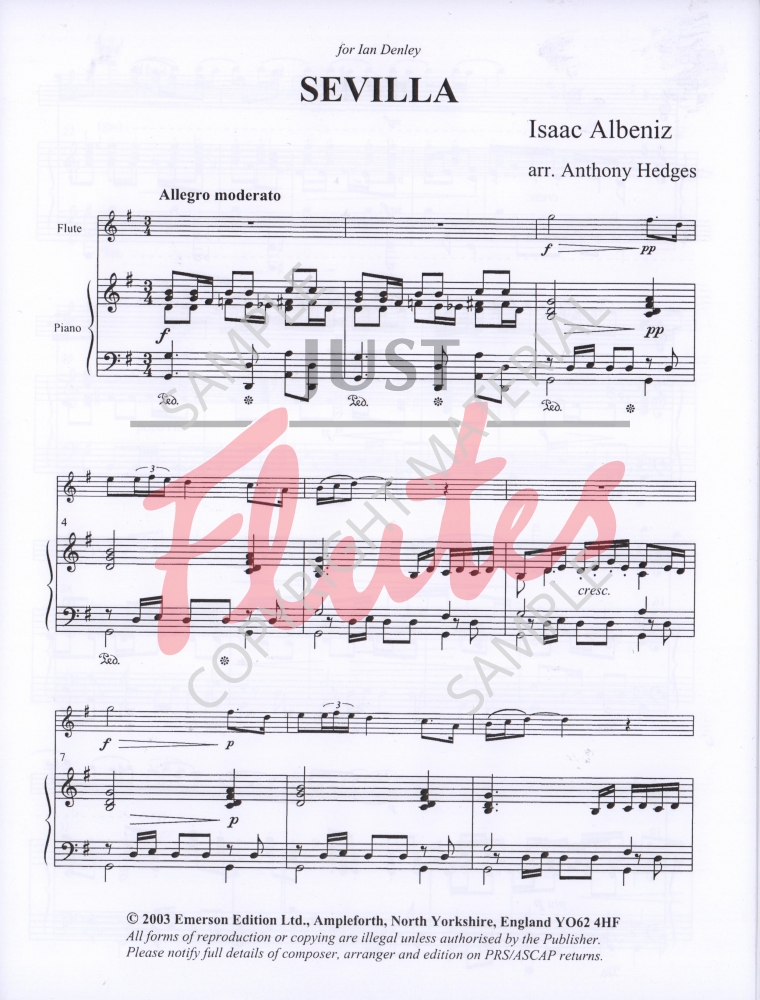 I did say less notes – not no notes! Mixtures of 5s, and 7s, and other fast runs are logical though, and scale based. This is a fun piece that many will find attractive, especially as it looks easier on the page than it actually is to play!
I did say less notes – not no notes! Mixtures of 5s, and 7s, and other fast runs are logical though, and scale based. This is a fun piece that many will find attractive, especially as it looks easier on the page than it actually is to play!
Paul Lewis: Serenade Populaire
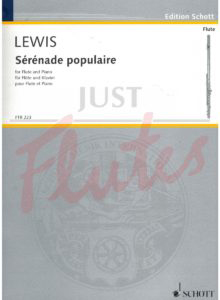
This capricious and well-written piece is also a little less daunting than some of the core repertoire. Easy on the eye and with a simple rhythmic structure, much of the interest is added by the piano harmonies. The expressive introduction gives scope for those with a great sound to shine before a tricky little Allegretto has to be negotiated before the opening returns. The Allegro spirituoso is has a catchy rhythm and uses scale passages to create the excitement. Trick fingerings for the end will allow your virtuosity to bring the house down!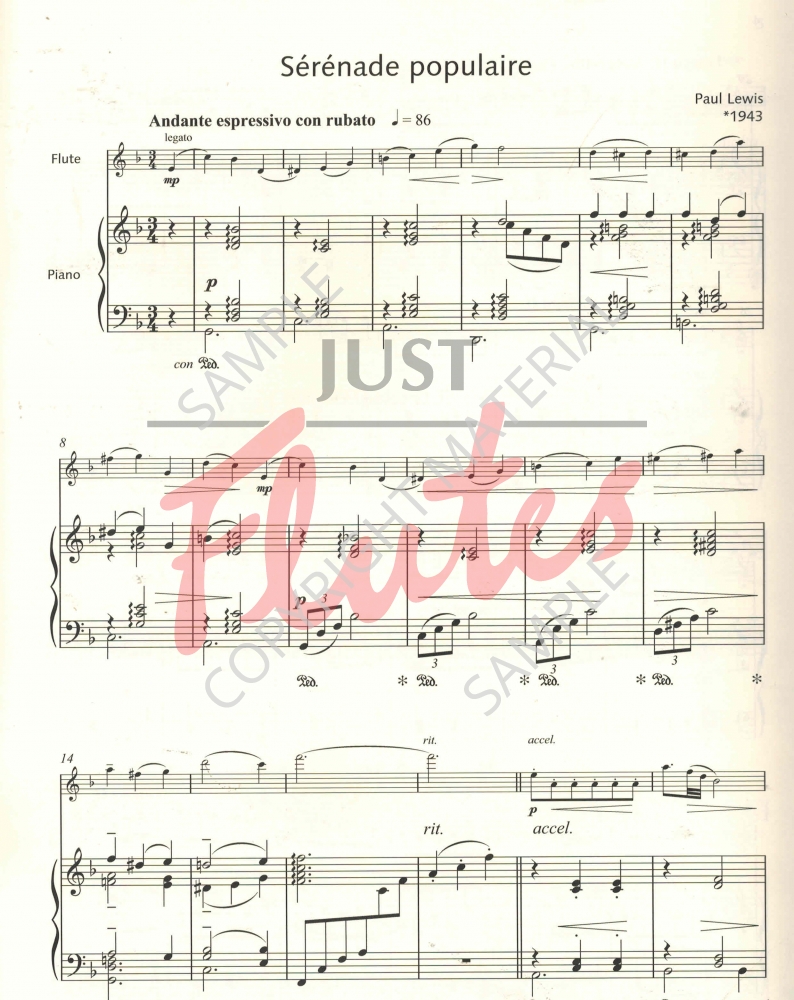
Edward Gregson: Fertility Dance from Aztec Dances.
This is at the other end of the musical spectrum and another great ARSM option. It will really appeal to those confident enough to tackle the challenges posed by the frequent changes of time, lip 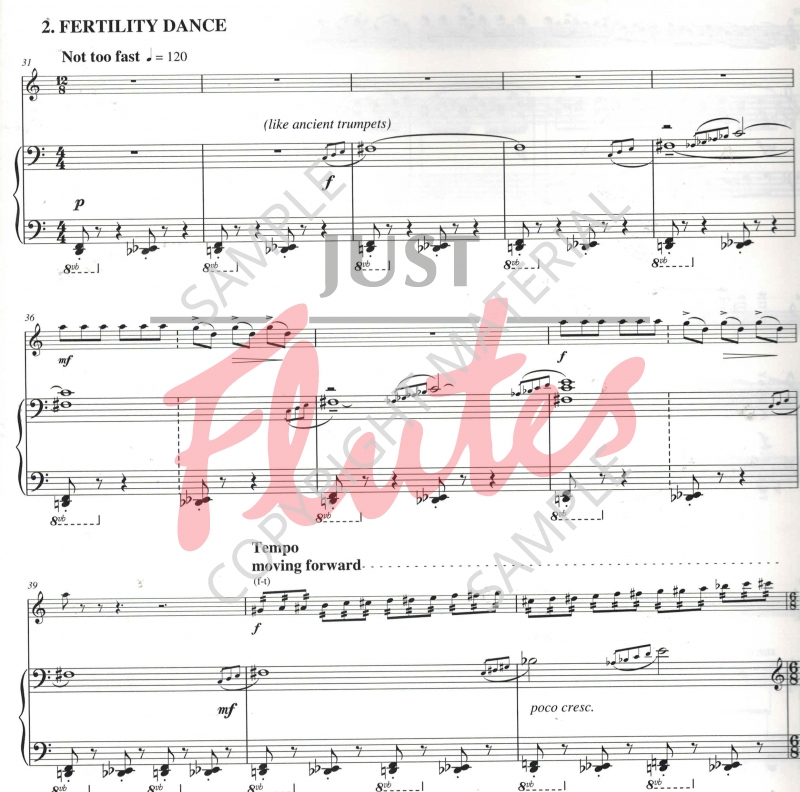 bends and flutter tonguing which define the style although these new techniques are not needed for the grade 8 exam. A nifty set of fingers will also help, even if there are pieces with more notes available on the syllabus for those who need them! Fertility Dance is a wonderfully exciting movement and a brilliant choice for the right student!
bends and flutter tonguing which define the style although these new techniques are not needed for the grade 8 exam. A nifty set of fingers will also help, even if there are pieces with more notes available on the syllabus for those who need them! Fertility Dance is a wonderfully exciting movement and a brilliant choice for the right student!
List C:
Christopher Ball: Pan Overheard from Invocations of Pan
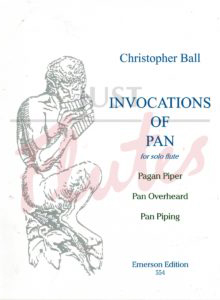
This is dedicated to Adam Walker – no pressure then! It’s best played by someone with great imagination and flair. Not terrifyingly difficult (although it looks it) but flexibility in tonal colour and dynamic together with good intonation throughout will be the way to a successful performance. The score is peppered with arrows indicating the rubato required which is really helpful! Another good ARSM choice.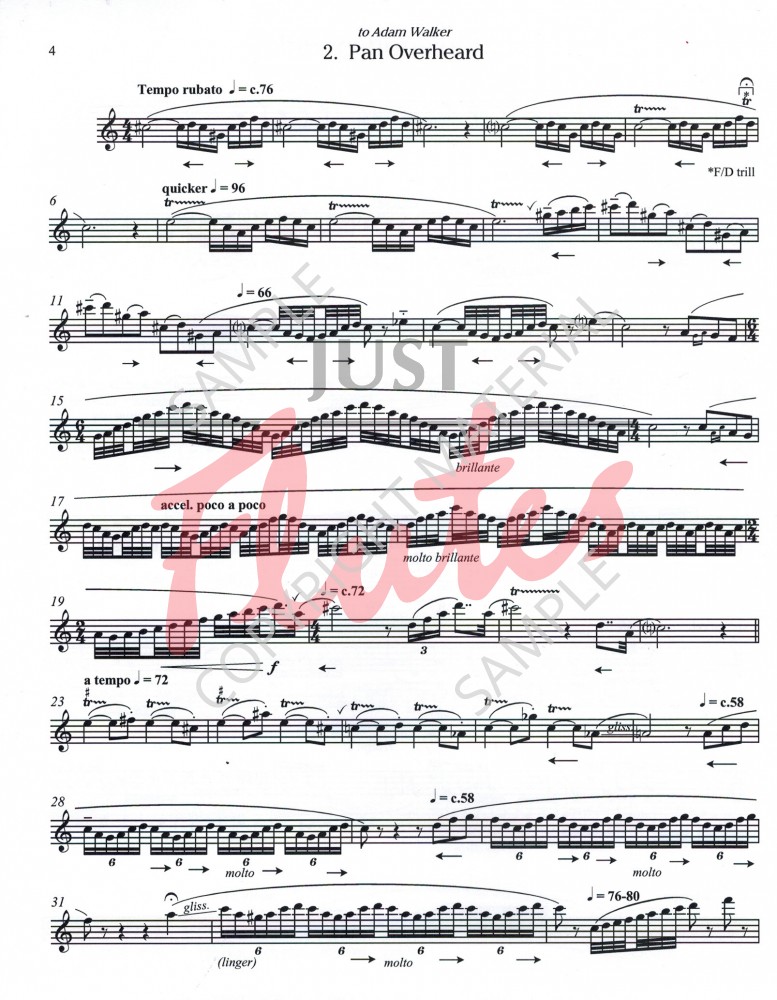
These next 2 pieces are for the rhythmic only!
Rob Buckland: Changing Times from Changing Times for Solo Flute
This is ideal for someone with a great sense of rhythm – the funky style is brilliant! It's based on a pentatonic scale with repetitive note patterns which become progressively more difficult. However the challenge is all in the complex rhythms. Buckland says that if you count in quavers you should be fine. I'm not so sure! This is definitely another ARSM possibility.
Hilary Taggart: Kerry from Pictures
I have long been a fan of Hilary's pieces, nearly all of which clearly state the technical purpose for which they were written. The direction here is Idiom and this is about coupling a wistful Irish melody with an Irish jig.
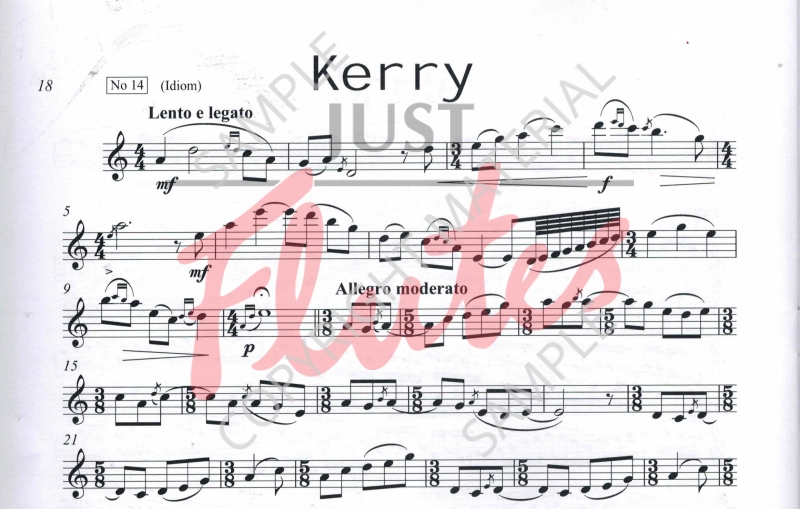 A free Lento section appears 3 times, each time sounding like a different improvisation. The Allegro focuses on alternating metre 3+2, giving the jig a lop-sided feel. Like the Buckland, this needs a player with a keenly developed rhythmic pulse. The style is completely different though, so again there's plenty of choice.
A free Lento section appears 3 times, each time sounding like a different improvisation. The Allegro focuses on alternating metre 3+2, giving the jig a lop-sided feel. Like the Buckland, this needs a player with a keenly developed rhythmic pulse. The style is completely different though, so again there's plenty of choice.
And finally:
Furstenau: Valse de Schubert "Beethoven's Sehnsucht's-Waltzer from Articulation for Flute by Robert Winn.
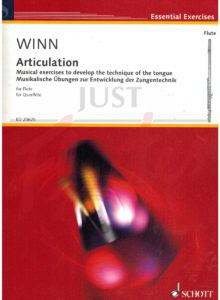
The inclusion of this book on the list is fantastic but this should be the culmination of practice from it, rather than the starting point. It's great to use as most of the work is done through studies and arrangements of all sort of tunes, keeping the actual exercises to a minimum. This workout by Furstenau is from the section 'Advanced Articulation' which tests mixed articulation linked to technical virtuosity – this is difficult and a test of stamina! The theme and variation form will help to focus practice though, which is just as well as this has everything – lyrical playing, articulation patterns, a short cadenza and a virtuoso finale! You'll certainly be ready to take ARSM if you can play this!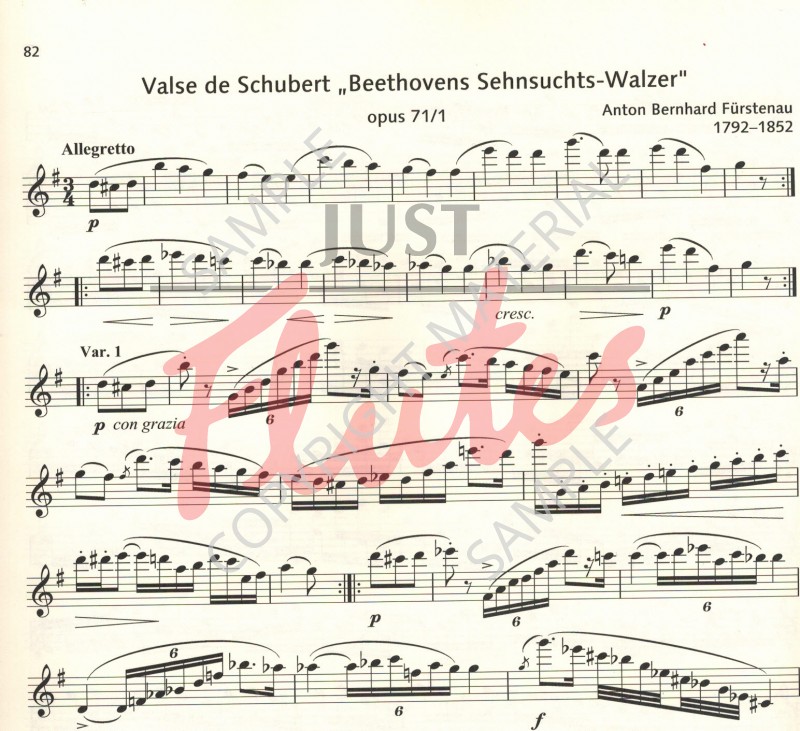
There is so much variety in this list both in terms of style and difficulty. Exploring these riches will be a joy – hooray!
